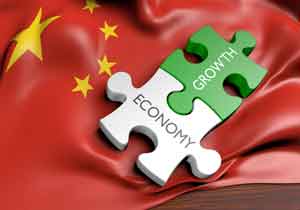Challenges in Measuring China’s Economic Growth

This is the first post in a three-part series on measuring economic activity in China.
China’s share of world economic output has risen significantly over the past few decades. However, many people remain skeptical about the accuracy of official economic statistics released by the Chinese government. An article in The Regional Economist examined some of the challenges in measuring economic growth in China.
The authors of the article, Assistant Vice President and Economist Michael Owyang and Senior Research Associate Hannah Shell wrote: “Even if every Chinese economic number were reported truthfully and accurately to the best of an individual’s understanding, the official numbers would still fail to fully capture the evolution of an economy growing and changing so quickly.”
Command Economy to Market Economy
The authors explained that the Chinese National Bureau of Statistics (NBS) was created to track agriculture and production in the state-owned enterprises and that tracking economic activity was more straightforward then.
They noted that China began a major economic transformation in the late 1970s, taking steps that resulted in a new private service sector that grew faster than the NBS was prepared for. Furthermore, the authors added that China transitioned to the United Nations’ System of National Accounts in 1993, which uses the value-added approach to gross domestic product (GDP)—a relatively new concept for those putting together the national statistics.
“Measurement errors are inevitable in an economy as large and complex as China’s,” Owyang and Shell wrote. “The additional challenge of overhauling the country’s statistical system to measure market economy variables makes accurately measuring growth during the transition period unlikely.”
Falsification or Manipulation?
The authors addressed arguments that unreliable official GDP statistics are due to intentional data falsification or data manipulation.
Regarding data falsification, they noted that the NBS makes corrections for provincial officials’ tendency to overstate GDP. For example, the NBS’ reported national GDP in 2015 was about 7 percent less than the sum of the provincial numbers.
Owyang and Shell pointed out that the NBS’ data series are less volatile than other countries’, which makes the series seem unreliable or manipulated. However, they cited a study by former Fed Chairman Ben Bernanke and research analyst Peter Olson that suggests the smoothness is more likely a result of technical issues rather than political manipulation.1
China vs. Other Developing Countries
The authors also compared the degree of unreliability of China’s official statistics with that of other developing countries. To do so, they looked the World Bank’s rankings of low- and middle-income countries (with populations of more than 1 million) by a “statistical capacity score.”
They found that improvements in the NBS’ source data and collection practices have made China’s final official statistics higher quality than those of many other developing countries. In particular:
- In 2004, China’s statistical capacity score was in the 38th percentile of low- and middle-income countries.
- In 2015, it was in the 52nd percentile.
- In 2016, it was in the 83rd percentile.
Conclusion
Owyang and Shell noted that China’s economic data system remains a work in progress and suggested that the NBS could improve the system by increasing transparency behind its data-gathering process and statistical procedures.
“But the heavy criticism of Chinese officials and accusations of intentional falsification or manipulation are likely misplaced. The truth is more likely that economic growth in China is too challenging to capture as effectively as growth in developed countries,” they wrote.
The next post in this series will discuss some alternative methods that have been used to try to obtain better estimates of China’s GDP.
Notes and References
1 Bernanke, Ben S.; and Olson, Peter. “China’s Transparency Challenges.” Brookings Institution, March 8, 2016.
Follow the Series
- Challenges in Measuring China’s Economic Growth
- Some Alternative Methods for Tracking Chinese GDP
- Estimating Chinese GDP Using Night-Lights Data
Additional Resources
- Regional Economist: China’s Economic Data: An Accurate Reflection, or Just Smoke and Mirrors?
- On the Economy: The New World Leader in Innovation
- On the Economy: Tigers, Tiger Cubs and Economic Growth
Citation
ldquoChallenges in Measuring China’s Economic Growth,rdquo St. Louis Fed On the Economy, Sept. 11, 2017.
This blog offers commentary, analysis and data from our economists and experts. Views expressed are not necessarily those of the St. Louis Fed or Federal Reserve System.
Email Us
All other blog-related questions

